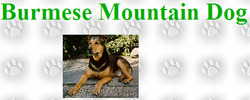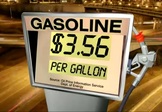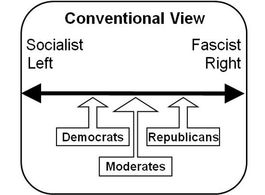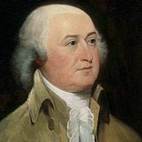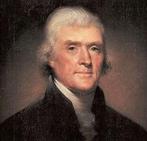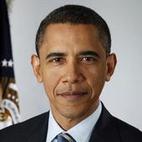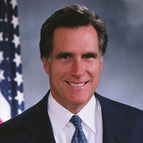3-5 Inaccurate or Biased Info (RI.3)

3-5.RI.3. understand and discuss that web sites and digital resources may contain inaccurate or biased information
I Can

I can understand that web sites may contain inaccurate information.
I can discuss examples of what biased information means.
I can discuss examples of what biased information means.
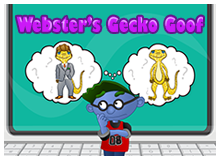
Webster learns that you can't trust everything you read online.
1. Read the book.
2. Find a partner to form a pair.
3. Find another pair to form a team.
4. Check out the Discussion Guide! Let's discuss each question with your team.
Visit www.TotallyTrueZooFacts.com and spot the clues which indicate that the website is not trustworthy.
1. Read the book.
2. Find a partner to form a pair.
3. Find another pair to form a team.
4. Check out the Discussion Guide! Let's discuss each question with your team.
Visit www.TotallyTrueZooFacts.com and spot the clues which indicate that the website is not trustworthy.
True or False?
Media: Left or Right, Liberal or Conservative, Democrat or Republican?
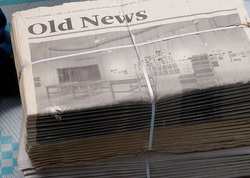
Those searching for truly unbiased news in an environment of media bias may have a difficult time of doing so. If the media persists in presenting a follower’s slant – and if history is any example, it will – viewers may have to take it upon themselves to perhaps get their news from a variety of sources and then come to their own opinions.
Liberals (Democrats) claim that the media leans too far to the right (toward Republican thinking) and conservatives (Republicans) claim that it leans too far to the left (toward Democratic thinking). Some of these claims are at least partly true. Fox News talk shows tend to portray conservatism, and CNN news programs, liberalism. But media bias is nothing new.
By the 1800s, newspaper editors began using their papers as vehicles for specific opinions. As the first political party systems formed, newspapers took sides. Political parties (Democrats for Thomas Jefferson and Federalists for John Adams) used friendly papers to talk to their supporters and occasionally attack political opponents. Some of these attacks were no doubt valid and others were venomous slander full of name-calling and lies.
In a day now, where news is delivered over a variety of mediums, bias in mainstream outlets remains – and much of it does appear to actually lean to the left, according to a UCLA study. Some websites, like factcheck.org, try to present a more even view of political news.
The above was taken from The Herald Newspaper. Click on the "Old News" picture above for the whole story!
Liberals (Democrats) claim that the media leans too far to the right (toward Republican thinking) and conservatives (Republicans) claim that it leans too far to the left (toward Democratic thinking). Some of these claims are at least partly true. Fox News talk shows tend to portray conservatism, and CNN news programs, liberalism. But media bias is nothing new.
By the 1800s, newspaper editors began using their papers as vehicles for specific opinions. As the first political party systems formed, newspapers took sides. Political parties (Democrats for Thomas Jefferson and Federalists for John Adams) used friendly papers to talk to their supporters and occasionally attack political opponents. Some of these attacks were no doubt valid and others were venomous slander full of name-calling and lies.
In a day now, where news is delivered over a variety of mediums, bias in mainstream outlets remains – and much of it does appear to actually lean to the left, according to a UCLA study. Some websites, like factcheck.org, try to present a more even view of political news.
The above was taken from The Herald Newspaper. Click on the "Old News" picture above for the whole story!
Note: The Federalist party faded away by 1816, while the Republican party began to rise in 1856 with Abraham Lincoln.
Accurate Presidential Polls

Which presidential polls do you think were the most accurate? NBC? CBS? ABC? Fox? CNN? Newsweek? Gallup? Click on the icon to find out!
Dealing With Media Bias
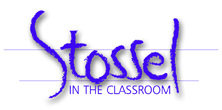
Balance: Left, Right or Center?

"If viewers spent an equal amount of time watching Fox's 'Special Report' as ABC's 'World News' and NBC's 'Nightly News,' then they would receive a nearly perfectly balanced version of the news," said Milyo, an associate professor of economics and public affairs at the University of Missouri at Columbia.
Five news outlets — "NewsHour With Jim Lehrer," ABC's "Good Morning America," CNN's "NewsNight With Aaron Brown," Fox News' "Special Report With Brit Hume" and the Drudge Report — were in a statistical dead heat in the race for the most centrist news outlet. Of the print media, USA Today was the most centrist.
The researchers took numerous steps to safeguard against bias — or the appearance of same — in the work, which took close to three years to complete. They went to great lengths to ensure that as many research assistants supported Democratic candidate Al Gore in the 2000 election as supported President George Bush. They also sought no outside funding, a rarity in scholarly research.
"No matter the results, we feared our findings would've been suspect if we'd received support from any group that could be perceived as right- or left-leaning, so we consciously decided to fund this project only with our own salaries and research funds that our own universities provided," Groseclose said.
The results break new ground. "Past researchers have been able to say whether an outlet is conservative or liberal, but no one has ever compared media outlets to lawmakers," Groseclose said. "Our work gives a precise characterization of the bias and relates it to known commodity — politicians."
The above was taken from The UCLA Newsroom in California. Click on the "UCLA Newsroom" picture above for the whole story!
Five news outlets — "NewsHour With Jim Lehrer," ABC's "Good Morning America," CNN's "NewsNight With Aaron Brown," Fox News' "Special Report With Brit Hume" and the Drudge Report — were in a statistical dead heat in the race for the most centrist news outlet. Of the print media, USA Today was the most centrist.
The researchers took numerous steps to safeguard against bias — or the appearance of same — in the work, which took close to three years to complete. They went to great lengths to ensure that as many research assistants supported Democratic candidate Al Gore in the 2000 election as supported President George Bush. They also sought no outside funding, a rarity in scholarly research.
"No matter the results, we feared our findings would've been suspect if we'd received support from any group that could be perceived as right- or left-leaning, so we consciously decided to fund this project only with our own salaries and research funds that our own universities provided," Groseclose said.
The results break new ground. "Past researchers have been able to say whether an outlet is conservative or liberal, but no one has ever compared media outlets to lawmakers," Groseclose said. "Our work gives a precise characterization of the bias and relates it to known commodity — politicians."
The above was taken from The UCLA Newsroom in California. Click on the "UCLA Newsroom" picture above for the whole story!
Objective Rankings

Let's try a third source.
Mediaite is the site for news, information and smart opinions about print, online and broadcast media, offering original and immediate assessments of the latest news as it breaks.
Mediaite’s “Power Grid” objectively ranks media professionals across a dozen categories based on their real-time relevance. Power Grid rankings rely on an array of metrics, including anything and everything from circulation to Twitter followers to Google buzz depending on the category.
Mediaite is the site for news, information and smart opinions about print, online and broadcast media, offering original and immediate assessments of the latest news as it breaks.
Mediaite’s “Power Grid” objectively ranks media professionals across a dozen categories based on their real-time relevance. Power Grid rankings rely on an array of metrics, including anything and everything from circulation to Twitter followers to Google buzz depending on the category.






